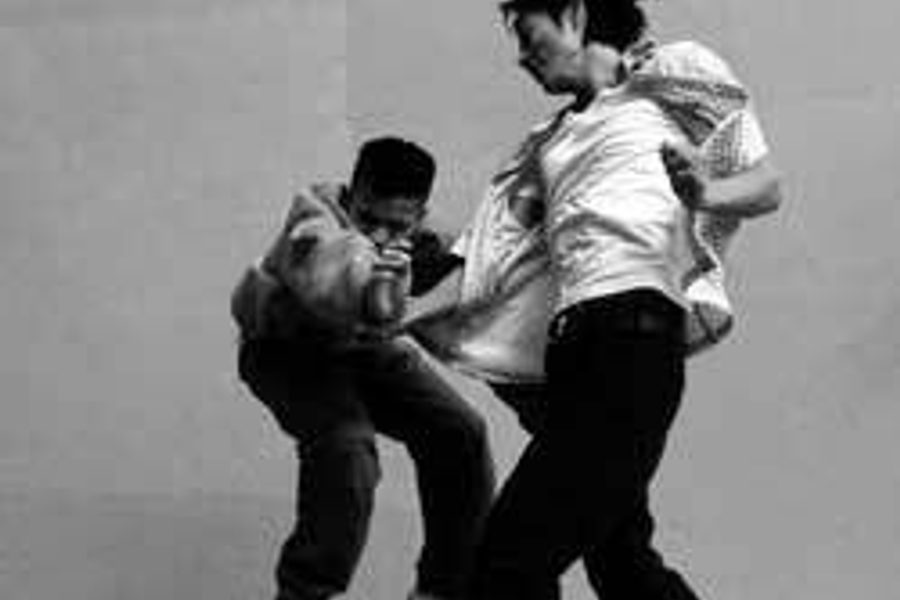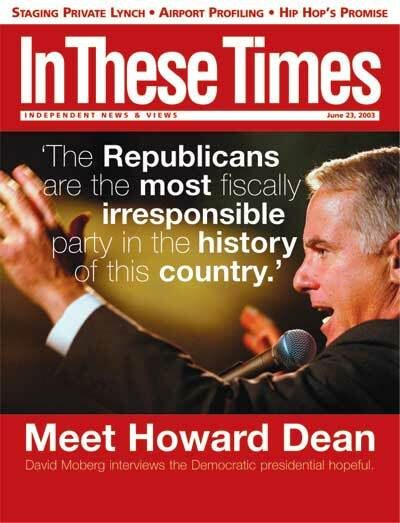
At last year’s Sundance Film Festival, an angry audience member stood up after the third screening of a film charting four Asian-American teenagers’ descent into petty crime, drugs and murder. “Why would you,” the man addressed Justin Lin, the film’s director, “make a film that is so empty [and] amoral for Asian-Americans?” Bedlam uncharacteristic of indie film’s premiere glamfest ensued, out of which a fist-pumping Roger Ebert rose to deliver this riposte: “Nobody would say to a bunch of white filmmakers, ‘How could you do this to your people?’ … Asian-American characters have the right to be whoever the hell they want to be!”
The Joy Luck Club for today’s MTV-goggling generation Better Luck Tomorrow definitely isn’t. Parents, whether slick assimilationist or hoary immigrant, are conspicuously absent from Lin’s film, with off-screen intergenerational conflict making its presence felt in the occasional aside (“My Dad is gonna kill me!”) and the inveterate wanderlust of its lost, lost youth. Think Spike Lee’s Do the Right Thing in teen comedic trappings, minus the fears of manic critics over the prospect of race riots sweeping from Bed-Stuy to a hood near you.
No journalists in riot gear this time—partly because Asians, no doubt, are viewed less threateningly than America’s blacks. More importantly, the violence of Better Luck Tomorrow’s denouement isn’t interracial, but maddeningly, ineradicably internecine. Told through flashbacks deftly interwoven with scenes from a teeny-bopping party, it initiates several mournful sequences capped by an open-ended finale leaving us with no answers, only burning questions: What leads kids like Ben (Parry Shen), the film’s protagonist, down the slippery slope of teen violence? Are negligent parents—even those letting their kids’ straight A’s serve as “alibis”—somehow to blame? And what’s race, to remix Tina Turner, got to do with it?
Better Luck Tomorrow, for its part, warns that Americans of all colors can’t be whoever the hell they want to be just yet. Racism as cross-burning ideology has waned, but in its place a much subtler, everyday discrimination chips away at the characters in this film. It takes a courtside protest, spurred on by a front-page article about Ben’s role as “the token Asian” on the school basketball team, to get our hero some playing time. “Thank God,” his clownish friend Virgil (Jason Tobin) exclaims, after learning that Stephanie (Karin Anna Cheung), the Asian hottie Ben passive-aggressively chases throughout the film, was dating rich Asian brat Steve (John Cho) and not another “white dude.” Later Ben, Virgil, Virgil’s roughneck cousin Han (Sung Kang) and Daric (Roger Fan)—the “mastermind” behind the group’s burgeoning trade in cheatsheets, drugs and stolen hardware—exchange blows with some race-baiting jocks. You can assimilate and run, but you can’t always hide from a mainstream that relishes hammering out the margins.
————–
So is this film only for Asians? The four are mostly at peace with the larger society around them, unracked by identity crises and racial conflicts, which are the exception rather than the rule in the serene Orange County of Lin’s making. Playing off model minority and Chinese gangster stereotypes, Better Luck Tomorrow is a simple tale of youthful alienation, bottled-up frustrations, and false empowerment—themes universal enough that one white, middle-aged Wisconsinite reportedly approached Lin to confess his deep identification with these characters.
The above brushes with bigotry are to the film, finally, what Trent Lott and the Shaquille O’Neal-Yao Ming spat are to 21st-century America: Just proof that multicultural diversity has yet to turn into real, multicultural cohesion. “Be there for you man, every game,” an impassioned, chubby student activist tells “Born To Warm” Ben as the two bear-hug in solidarity. It’s a moment lit up by the comic recognition that identity politics, while important, isn’t quite the real thing—nor the film’s primum mobile, as characters struggle just as mightily with adolescence, gender, class and sheer suburban boredom.
But Lin does fix a high-powered microscope on race and violent youth, and what he finds is at once chilling and familiar. Throughout the film, Ben earns Steve’s trust by escorting Stephanie to the junior prom (so Steve, we later learn, can take a blond bombshell out the same night), and by being the honest, sincere guy that Ben is (most of the time). But after Steve enlists Ben’s gang to rob his affluent but inattentive parents, automatic firearms and all, to give them “a wake-up call,” the faux heist turns into a golden opportunity to give the rich boy his own “wake-up call.” Ben hits Steve with a bat to knock a gun from his hands, pauses, then unleashes a frenzy that shocks everyone in the room.
It’s the pause before the frenzy that holds the telling connection between race, violence and human nature—Ben, shaken and hesitant, stares down at Steve, who shoots back the baleful glance that ultimately gets him mauled. It’s a look that demeans, a look that disempowers (“He thinks you’re dickless,” Daric tells Ben earlier), a look that strips away the humanity and self-worth that violence seeks, vainly, to restore. Spiraling around the dead, zooming in on the wan and rejected, Lin’s camera is far from empty and amoral. It’s utterly, piercingly human.
The Joy Luck Club for today’s MTV-goggling generation Better Luck Tomorrow definitely isn’t. Parents, whether slick assimilationist or hoary immigrant, are conspicuously absent from Lin’s film, with off-screen intergenerational conflict making its presence felt in the occasional aside (“My Dad is gonna kill me!”) and the inveterate wanderlust of its lost, lost youth. Think Spike Lee’s Do the Right Thing in teen comedic trappings, minus the fears of manic critics over the prospect of race riots sweeping from Bed-Stuy to a hood near you.
No journalists in riot gear this time—partly because Asians, no doubt, are viewed less threateningly than America’s blacks. More importantly, the violence of Better Luck Tomorrow’s denouement isn’t interracial, but maddeningly, ineradicably internecine. Told through flashbacks deftly interwoven with scenes from a teeny-bopping party, it initiates several mournful sequences capped by an open-ended finale leaving us with no answers, only burning questions: What leads kids like Ben (Parry Shen), the film’s protagonist, down the slippery slope of teen violence? Are negligent parents—even those letting their kids’ straight A’s serve as “alibis”—somehow to blame? And what’s race, to remix Tina Turner, got to do with it?
Better Luck Tomorrow, for its part, warns that Americans of all colors can’t be whoever the hell they want to be just yet. Racism as cross-burning ideology has waned, but in its place a much subtler, everyday discrimination chips away at the characters in this film. It takes a courtside protest, spurred on by a front-page article about Ben’s role as “the token Asian” on the school basketball team, to get our hero some playing time. “Thank God,” his clownish friend Virgil (Jason Tobin) exclaims, after learning that Stephanie (Karin Anna Cheung), the Asian hottie Ben passive-aggressively chases throughout the film, was dating rich Asian brat Steve (John Cho) and not another “white dude.” Later Ben, Virgil, Virgil’s roughneck cousin Han (Sung Kang) and Daric (Roger Fan)—the “mastermind” behind the group’s burgeoning trade in cheatsheets, drugs and stolen hardware—exchange blows with some race-baiting jocks. You can assimilate and run, but you can’t always hide from a mainstream that relishes hammering out the margins.
————–
So is this film only for Asians? The four are mostly at peace with the larger society around them, unracked by identity crises and racial conflicts, which are the exception rather than the rule in the serene Orange County of Lin’s making. Playing off model minority and Chinese gangster stereotypes, Better Luck Tomorrow is a simple tale of youthful alienation, bottled-up frustrations, and false empowerment—themes universal enough that one white, middle-aged Wisconsinite reportedly approached Lin to confess his deep identification with these characters.
The above brushes with bigotry are to the film, finally, what Trent Lott and the Shaquille O’Neal-Yao Ming spat are to 21st-century America: Just proof that multicultural diversity has yet to turn into real, multicultural cohesion. “Be there for you man, every game,” an impassioned, chubby student activist tells “Born To Warm” Ben as the two bear-hug in solidarity. It’s a moment lit up by the comic recognition that identity politics, while important, isn’t quite the real thing—nor the film’s primum mobile, as characters struggle just as mightily with adolescence, gender, class and sheer suburban boredom.
But Lin does fix a high-powered microscope on race and violent youth, and what he finds is at once chilling and familiar. Throughout the film, Ben earns Steve’s trust by escorting Stephanie to the junior prom (so Steve, we later learn, can take a blond bombshell out the same night), and by being the honest, sincere guy that Ben is (most of the time). But after Steve enlists Ben’s gang to rob his affluent but inattentive parents, automatic firearms and all, to give them “a wake-up call,” the faux heist turns into a golden opportunity to give the rich boy his own “wake-up call.” Ben hits Steve with a bat to knock a gun from his hands, pauses, then unleashes a frenzy that shocks everyone in the room.
It’s the pause before the frenzy that holds the telling connection between race, violence and human nature—Ben, shaken and hesitant, stares down at Steve, who shoots back the baleful glance that ultimately gets him mauled. It’s a look that demeans, a look that disempowers (“He thinks you’re dickless,” Daric tells Ben earlier), a look that strips away the humanity and self-worth that violence seeks, vainly, to restore. Spiraling around the dead, zooming in on the wan and rejected, Lin’s camera is far from empty and amoral. It’s utterly, piercingly human.
Kevin Y. Kim is a writer in New York. His work has appeared in The Nation, L.A. Weekly, Far Eastern Economic Review, and elsewhere.







